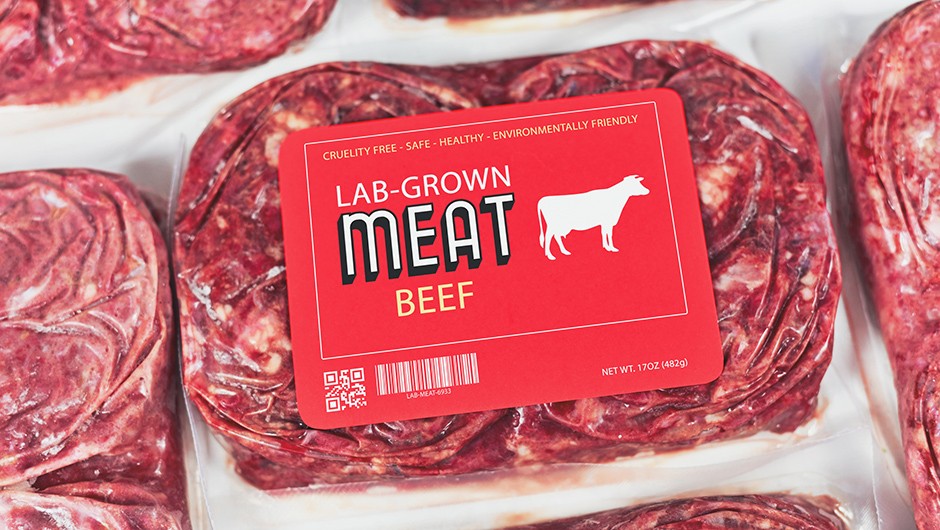In addition to being a source of cruelty, meat production is one of the main causes of pollution on the planet. However, many people are not yet ready to give up this food. To offer a sustainable and ethical alternative, many entrepreneurs and scientists are investing energy and resources in synthetic meat.
But how exactly is it produced and what are its environmental benefits? And where can it be found on the market already? Let’s discover this new food frontier together.
Synthetic Meat: How Is It Produced?

The so-called “synthetic meat”, not to be confused with fake meat (which is obtained by using only vegetable ingredients), was born in a laboratory. The first experiment in this field was conducted by Professor Mark Post of Maastricht University, who grew the world’s first artificial hamburger in 2013. The production process of this food that does not require slaughter is based on research in the field of regenerative medicine.
This meat, which looks very similar to what we are used to eating, is obtained in the laboratory by creating stem cells: it is therefore composed of muscle fibers, fat and other animal cells, which are non-invasive.
Indeed, these tissues are taken by a harmless biopsy to be cultivated in a culture medium (also called broth) in which they grow and multiply by trillions of times.
The Environmental Impact of Laboratory-Grown Meat
lab-grown meat has a number of environmental benefits. First of all, it does not require intensive farming, which is one of the main causes of greenhouse gas pollution. Reducing the use of livestock also reduces the amount of land used to grow soybeans and animal feed.
The benefits also include the use of another valuable resource, namely water, as confirmed by a scientific study conducted a few years ago, entitled “Environmental Impacts of Cultured Meat Production”.
The results showed that the production of 1000 kg of cultured meat requires 26-33 GJ of energy, 367-521 m 3 of water, 190-230 m 2 of land and emits 1900-2240 kg of CO. Compared to conventionally produced European meat, cultured meat reduces energy consumption by 7-45%, greenhouse gas emissions by 78-96%, land use by 99% and water use by 82-96%, depending on the product.
However, at present, the scientific community is still not unanimous on the level of environmental sustainability of synthetic meat. There are still no up-to-date studies on the consequences of producing this food of the future.
In this regard, food safety researcher Alexandra Sexton of the University of Sheffield noted:
“We really don’t know what the environmental impact will be when these technologies are produced on a large scale.” Indeed, according to the expert, without decarbonization in parallel with the development of synthetic meat, “any potential climate benefits that this technology is capable of delivering would be significantly reduced.”
“For a lower carbon footprint than conventional meat, it is essential that renewable energy sources are used in its production, even during procurement, especially for the production of nutrients and other ingredients needed for laboratory culture,” points out a team of researchers who conducted a study – published last year – on synthetic meat.
For now, the main obstacle to this technology is the production costs, which are still quite high.
Where is Synthetic Meat Already on the Market?
Many people admit to being curious to try synthetic meat, but where can you buy it? The first country to approve the sale of the food was Singapore in late 2020, when it gave the green light to lab-created chicken nuggets launched on the market by startup Eat Just. It is the only nation where citizens have been granted the ability to consume synthetic meat.
Meanwhile, however, several companies around the world are investing in this sector. Among them are the American Good Meat, which announced the construction of the world’s largest bioreactors for the production of cultured meat, which will then be sold in stores and restaurants, and the Israeli start-up Future Meat Technologies.
In the U.S., another company – Bond Pet Foods – is working to produce synthetic meat for snacks and treats for dogs and cats.
These cruelty-free foods are certainly a valuable and more ethical alternative to slaughtered meat, but they won’t be enough to save the world from the scourge of pollution.
